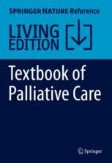Search
Search Results
-
Transcranial direct current stimulation for post-stroke dysphagia: a meta-analysis
BackgroundStrokes may cause some swallowing difficulty or associated dysphagia in 25–80% of patients. This phenomenon has been linked to increased...

-
Incidence and Risk Factors for Dysphagia Following Cerebellar Stroke: a Retrospective Cohort Study
The cerebellum is known to play a supportive role in swallowing-related functions; however, wide discrepancies about the incidence rate of swallowing...

-
Palliative Care and Neurodegenerative Diseases
There is increasing awareness of the multiple needs of people with neurodegenerative disease and palliative care is able to help effectively in the...
-
Botulinum Neurotoxin: Could it Change the Way Sleep Looks Like after Cosmetic Treatment? A Focus on the Polysomnographic Traits
PurposeSleep is a crucial component of life, characterized by global behavioral and neurochemical inhibition of brain activity. The gold-standard...
-
Simultaneous Four Supratentorial Lesions Predict Tube Dependency Due to an Impaired Anticipatory Phase of Ingestion
This study aimed to identify the neuroanatomical predictors of oropharyngeal dysphagia and tube dependency in patients with supratentorial or...

-
A non-coding variant in the Kozak sequence of RARS2 strongly decreases protein levels and causes pontocerebellar hypoplasia
Bi-allelic variants in the mitochondrial arginyl-transfer RNA synthetase ( RARS2 ) gene have been involved in early-onset encephalopathies classified...

-
Comprehensive Analysis of a Japanese Pedigree with Biallelic ACAGG Expansions in RFC1 Manifesting Motor Neuronopathy with Painful Muscle Cramps
Cerebellar ataxia, neuropathy, and vestibular areflexia syndrome (CANVAS) is an autosomal recessive multisystem neurologic disorder caused by...

-
Polycaprolactone microparticles for the subcutaneous administration of cannabidiol: in vitro and in vivo release
Cannabidiol (CBD) has become a highly attractive entity in therapeutics. However, its low aqueous solubility, instability and handling problems limit...

-
Swallowing Difficulties
In the many considerations that arise during end-of-life care, swallowing problems are common and may have a disproportionately large impact on the...
-
Biomarker discovery for practice of precision medicine in hypopharyngeal cancer: a theranostic study on response prediction of the key therapeutic agents
BackgroundHypopharyngeal cancer is a relatively rare malignancy with poor prognosis. Current chemotherapeutic algorithm is still far from...

-
Plant Secondary Metabolites: An Introduction of Their Chemistry and Biological Significance with Physicochemical Aspect
Nature is the immense source of chemical compounds or substances usually acknowledged as natural products. Plants are the considerable source of an...
-
The Neuro-cardiac Axis in Arrhythmogenesis: Role and Impact of Autonomic Modulation
The autonomic nervous system consisting of two limbs, the sympathetic and parasympathetic nervous system, plays a key role in the modulation of...
-
Effect of Capsaicinoids on Neurophysiological, Biochemical, and Mechanical Parameters of Swallowing Function
Oropharyngeal dysphagia is prevalent in age-related neurological disorders presenting with impaired efficacy and safety of swallowing due to a loss...

-
Current Directions in Psychiatric Classification: From the DSM to RDoC
In 2010, the National Institute of Mental Health initiated the Research Domain Criteria (RDoC), a new research framework for studying mental...
-
Exercise-based dysphagia rehabilitation for adults with oesophageal cancer: a systematic review
Abstract BackgroundDysphagia is prevalent in oesophageal cancer with significant clinical and psychosocial complications. The purpose of this study...

-
Swallowing Difficulties
In the many considerations that arise during end-of-life care, swallowing problems are common and may have a disproportionately large impact on the...
-
Neurophysiological and Biomechanical Evaluation of the Mechanisms Which Impair Safety of Swallow in Chronic Post-stroke Patients
Oropharyngeal dysphagia (OD) is a common post-stroke complication and is associated with respiratory infections. The aim was to assess the...

-
No Room to Breathe: Airway Conditions Affecting the Equine Athlete
During exercising endoscopy, head flexion has been shown to be an important predisposing factor for upper respiratory tract collapse and is...
-
Palliative Care and Neurodegenerative Diseases
Neurological disease is a major cause of disability and death across the world. There is increasing evidence that palliative care is effective in...
-
Feeding Difficulties and Orofacial Myofunctional Disorder in Patients with Hepatic Glycogen Storage Diseases
Hepatic glycogen storage diseases (GSDs) are inborn errors of metabolism whose dietary treatment involves uncooked cornstarch administration and...
